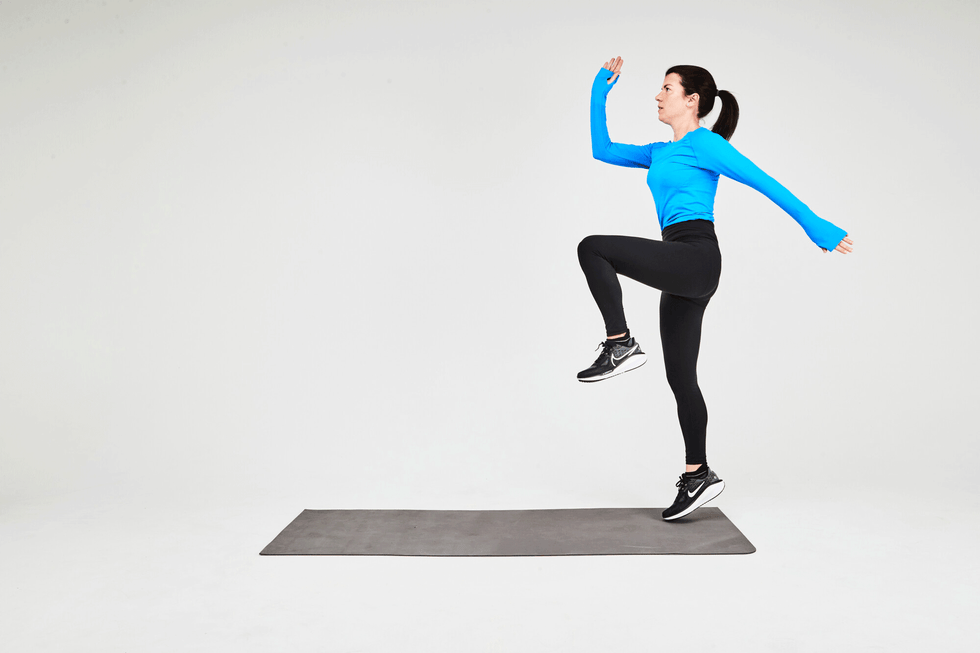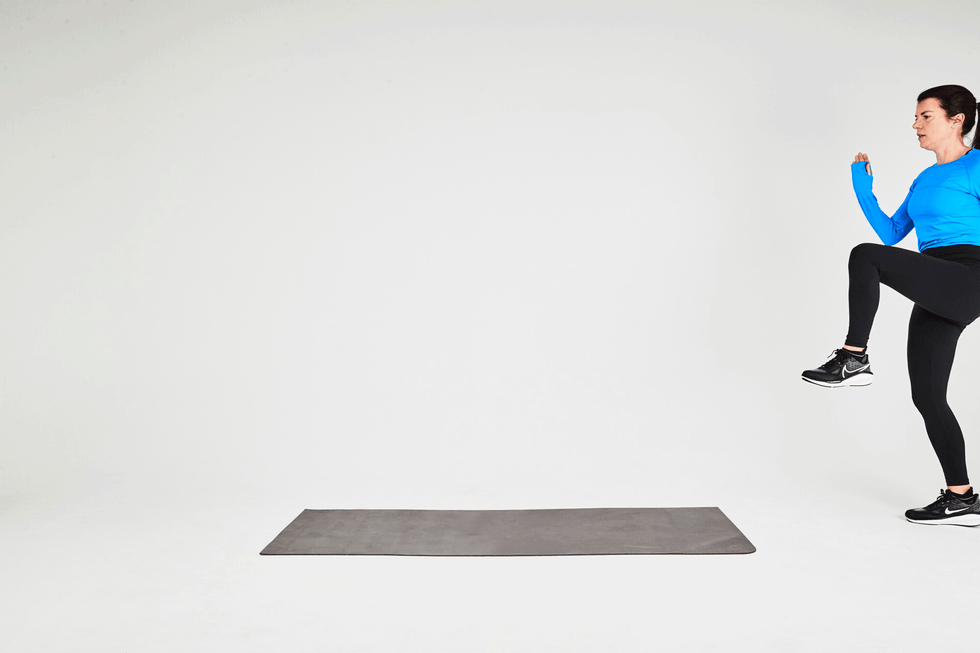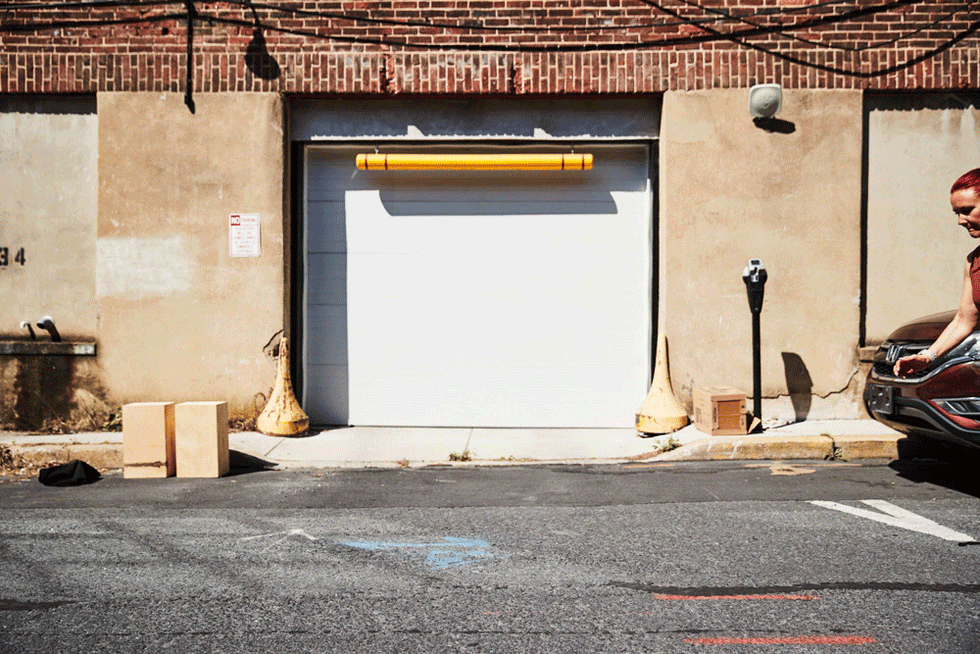A close relative to cadence, experts break down one of Cole Hocker’s go-to gold-medal moves.

With three laps to go in the men’s 1500-meter race at the Paris Olympics, American Cole Hocker emerged from the back of the pack. “Hocker was in fifth place until you suddenly saw his legs go from one speed and all of a sudden they were turning at another rate,” Greg Laraia, a running coach at Motiv in New York City tells Runner’s World. “With 100 meters to go, he passed on the inside and you saw him get [yet another] gear. It was really cool to see because all of those were different leg turnover changes or leg speed changes. He increased the turnover as the race was going.”
If you listened to Kara Goucher’s track and field commentary during the event, you heard her call out Hocker’s turnover as well. It was likely this skill that helped him push past Yared Nuguse and snag the gold medal in a stunning performance on the track.
“It’s a perfect comparison,” says Goucher, world championship silver medalist in the 10,000 meters and author of The Longest Race. “Obviously these are two amazingly talented men! But when they are sprinting in, we see Nuguse inch out his stride and lengthen it, while we see Hocker make quicker and tighter steps. Once [Hocker] changes gears and gets that turnover going, he is like a freight train gaining speed and momentum—nearly impossible to stop.”
Leg turnover isn’t a skill reserved just for Olympians. Regular runners can practice their technique in training to run faster and end races with a strong finishing kick.
“When I’m looking for turnover, I look to see if an athlete visually changes gears in their legs,” Goucher explains. “Can I see with my naked eye a change in the pace of how quickly their stride is turning over?”
To improve your turnover, keep reading for what the experts have to say about zeroing in on this skill.
Exactly What Leg Turnover Means
Leg turnover is closely related to cadence, but it’s not quite the same. “In short, turnover is how quickly you’re moving from one step to the other versus cadence, which is how many [steps] you’re taking [per minute],” Laraia explains.
Rather than count your steps, as you do with cadence, there’s nothing to count, which is what can make turnover more approachable for runners, Ben Delaney, New York Road Runners director of training programs, explains to Runner’s World.
“Running is, by definition, a simple concept,” says Delaney. “Telling runners ‘hey, if you turn over your legs over faster,’ and you explain to them where their foot should fall [directly underneath their body], that’s a more natural progression as opposed to ‘in the next minute, let’s count how many steps you take,’ which can be more technical and [may not be as valuable].”
Colleen M. Brough, D.P.T., director of Columbia RunLab, agrees, saying that turnover often brings to mind a specific image of the legs moving faster, which makes it an easy skill for runners to connect with and therefore, work to improve.
Leg turnover is also linked to power output. “The more power you put into the ground with each step, the more leg turnover you’re going to have,” Laraia says, adding that pushing hard (with force), helps you cover more ground faster.
How to Improve Leg Turnover
Consider Your Stride
To improve turnover, Delaney first looks at running form and economy, to fix overstriding. When runners overstride, their steps are longer than optimal, and their feet land too far in front of their bodies.
“If someone’s overstriding, that means the leg turnover and cadence is going to be lower,” he says. By simply aiming to have your foot land directly underneath your body (rather than out in front of you), you’ll limit overstriding, increase the number of steps you take per minute, and naturally increase turnover, per Delaney.
Warm Up With Drills and Plyos

Add 30 seconds of A-skips to your warmup to help improve turnover.
An easy thing you can work on in your warmup is skipping drills, such as A skips (as shown above) and B skips (as shown below), says Laraia. “They’re teaching you to cover ground like ‘pop, pop, pop,’” he says.

B skips can also help with turnover. Try 30 seconds of these skips with a leg extension in your prerun warmup.
Jumping drills or plyometrics, like box jumps or single- or double-leg hops, are also great things to help with turnover.

Another drill to add to your warmup to work on turnover: single-leg bounding.
Delaney also thinks runners should integrate A and B skips, as well as simple bounding (as shown above) into their warmups, aiming for about 30 seconds of each. He also suggests marching forward or doing high knees. “You’ll find the foot is going to naturally land on the mid foot,” he says, which you want for a solid turnover. “You’re beginning to use the hip, the glutes, the hamstrings, the bigger muscles in your quads to lift the knee up—that’s a huge piece of getting that running form,” he says.
Focus on Strides
Strides are the single best way to improve your leg turnover, per Laraia. “You’re working on moving at one pace and then all of a sudden transitioning to a faster pace,” he says. “You’ll feel a difference, so then it’s mentally teaching ‘oh, that‘s a faster turnover, I’m getting more power per step.’” He recommends adding a handful of 100-meter (or 10- to 15-second) strides at the start of a longer run once or twice a week.
Delaney adds that you should do strides at about 85 to 90 percent of your max effort.
“When I was marathon training, I’d still work on my turnover at least once a week by doing some quick fast-paced strides during a run,” Goucher adds. “It helps your legs to change gears, stay open, and helps when you need to shift paces in a race!”
Talk to Yourself
While Delaney cautions that he doesn’t like to give runners too many cues at a time, some key phrases help “simulate the idea of what we’re trying to get our bodies to do.”
For example, “land on the ball of your foot,” or “feel the ball of your foot.” The other: “Envision your knee going through a pane of glass.”
“You can really feel that knee driving up as opposed to just [saying] ‘lift your knee,’” he explains.
When it comes to arm swing, Delaney might say: “Think about the elbow driving backward like someone’s too close behind you and you want to get them off of your back.”
Laraia tells runners to think about powerfully pushing off at the back of their stride rather than the front; drive your back foot into the ground to propel you forward during each stride.
Save Turnover Skills for Shorter Distances
One note: “It’s easier to work on leg turnover in a shorter training cycle, such as a 5K, 10K, or even a half marathon, because you’re working on those high-end speeds where leg turnover is more important,” Laraia says.
During long-distance runs, you likely work on endurance, but that doesn’t mean turnover won’t come into play at all. For example, Goucher often commented about leg turnover when, during the marathon, runners wanted to push their speed to get in front of a competitor or head into their kick at the end of the race.
Signs You’re Improving Your Leg Turnover
Laraia suggests timing yourself running a distance of 400 meters and then retesting a minimum of four weeks later. An increase in speed will be a sign that you’ve increased your leg turnover. Just like with strength training, you need to give yourself four to six weeks before you start to see neuromuscular change.
“At a month, you’re probably going to notice at least a little difference,” says Laraia. “Maybe the time didn’t necessarily get faster, but you feel a little more springy. And that’s the first step.” At the two- to three-month mark is when you’re more likely to see noticeable change.
Laraia adds that an increase in power output could signify improved leg turnover, but it’s harder to measure.